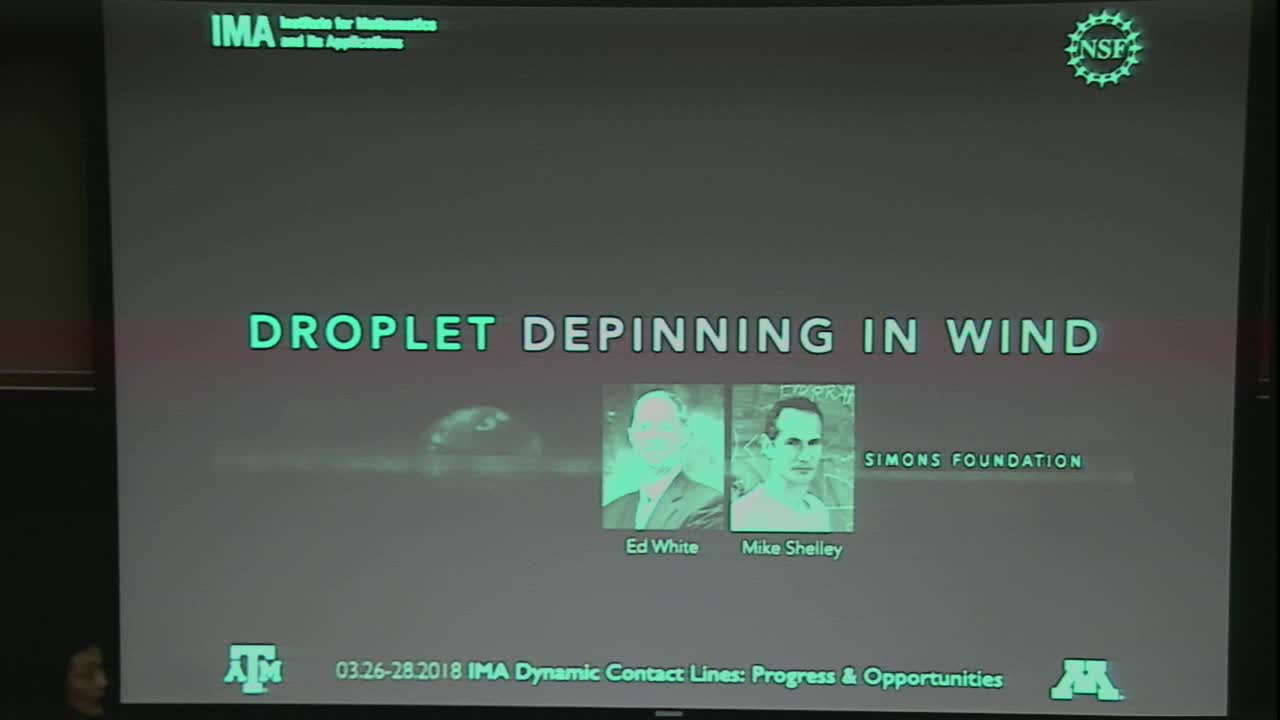Abstract
Pinning and depinning of a droplet on a surface is familiar yet deceptively complex for it depends on the interaction of the contact line with the microscopic features of the solid substrate. This physical picture is further compounded when wind of the Reynolds number greater than 100 blows over pinned drops, leading to the boundary layer separation and wake generation. In this talk, we will consider the onset of motion of a partially-wetting water droplet that is driven by the combination of high Re wind and gravity. The experimental results suggest a clear change in droplet depinning behaviors as the driving force transitions from wind-dominated to gravity-dominated regimes. This physical picture is then extended to include the effects of a solid protuberance that is placed in front of the drop. Depending on its distance from the solid, the droplet exhibits drafting, upstream motion, and splitting, due to the wake-induced hydrodynamic coupling that is analogous to drafting of moving bodies. The onset of the upstream motion regime is rationalized using a reduced model that computes the droplet shape governed by the pressure field inside the wake.
